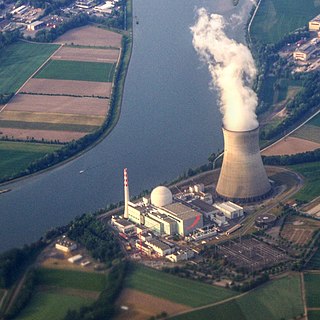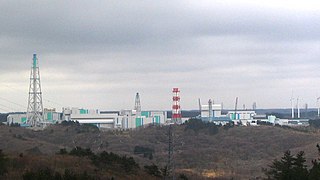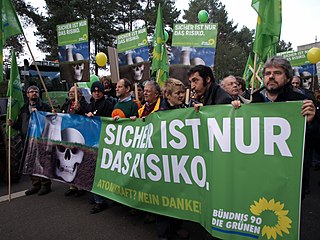Contents
- Belgium
- China
- France
- Germany
- Italy
- India
- Israel
- Japan
- Pakistan
- Russia
- United Kingdom
- United States
- References
This article relies largely or entirely on a single source .(July 2022) |
Note: tHM = ton of heavy metal.
This article relies largely or entirely on a single source .(July 2022) |
Note: tHM = ton of heavy metal.
| Name | Location | Fuel Type | Procedure | Status | Reprocessing capacity (tHM/yr) | Construction start date | Operation date | Closure | Purpose |
|---|---|---|---|---|---|---|---|---|---|
| Mol | Mol | LWR, MTR (Material Test Reactor) | Shut down | 80 | 1966 | 1974 | Civil |
| Name | Location | Fuel Type | Procedure | Status | Reprocessing capacity (tHM/yr) | Construction start date | Operation date | Closure | Purpose |
|---|---|---|---|---|---|---|---|---|---|
| Intermediate Pilot Plant | Shut down | 60-100 | 1968 | 1970-1979 | |||||
| Plant 404 | Operational | 50 | 2004 |
| Name | Location | Fuel Type | Procedure | Status | Reprocessing capacity (tHM/yr) | Construction start date | Operation date | Closure | Purpose |
|---|---|---|---|---|---|---|---|---|---|
| UP-1 | Marcoule | Shut down | 0.001 | 1958 | 1997 | Military | |||
| CEA APM | Marcoule | Fast Breeder | PUREX, DIAMEX, SANEX | Operational | 6 | 1988 | Civil | ||
| UP-2 | La Hague | LWR | PUREX | Shut down | 900 | 1967 | 1974 | Civil | |
| UP-2-400 | La Hague | LWR | PUREX | Shut down | 400 | 1976 | 1990 | Civil | |
| UP-2-800 | La Hague | LWR | PUREX | Operational | 800 | 1990 | Civil | ||
| UP-3 | La Hague | LWR | PUREX | Operational | 800 | 1990 | Civil |
| Name | Location | Fuel Type | Procedure | Status | Reprocessing capacity (tHM/yr) | Construction start date | Operation date | Closure | Purpose |
|---|---|---|---|---|---|---|---|---|---|
| Karlsruhe, WAK | Light Water Reactor | Shut down | 35 | 1971 | 1990 | Civil |
| Name | Location | Fuel Type | Procedure | Status | Reprocessing capacity (tHM/yr) | Construction start date | Operation date | Closure | Purpose |
|---|---|---|---|---|---|---|---|---|---|
| Rotondella | Rotondella | Thorium | Shut down | 5 [1] | 1968 |
| Name | Location | Fuel Type | Procedure | Status | Reprocessing capacity (tHM/yr) | Construction start date | Operation date | Closure | Purpose |
|---|---|---|---|---|---|---|---|---|---|
| Trombay | PUREX | Operational | 60 | 1965 | Military | ||||
| Tarapur | PHWR | PUREX | Operational | 100 | 1982 | Civil | |||
| Kalpakam | PHWR, FBTR | PUREX | Operational | 100 | 1998 | Civil | |||
| Tarapur | PHWR | PUREX | Operational | 100 | 2011 | Civil |
| Name | Location | Fuel Type | Procedure | Status | Reprocessing capacity (tHM/yr) | Construction start date | Operation date | Closure | Purpose |
|---|---|---|---|---|---|---|---|---|---|
| Dimona | Shut down | 60-100 | 1960 | Military |
| Name | Location | Fuel Type | Procedure | Status | Reprocessing capacity (tHM/yr) | Construction start date | Operation date | Closure | Purpose |
|---|---|---|---|---|---|---|---|---|---|
| Tokaimura | LWR | Shut down | 210 | 1977 | 2006 | Civil | |||
| Rokkasho | LWR | Under construction | 800 | 1998 | (2024) | Civil |
| Name | Location | Fuel Type | Procedure | Status | Reprocessing capacity (tHM/yr) | Construction start date | Operation date | Closure | Purpose |
|---|---|---|---|---|---|---|---|---|---|
| New Labs | Rawalpindi | Plutonium/Thorium | Operational | 80 | 1982 | Military | |||
| Khushab Nuclear Complex | Atomic City of Pakistan | Tritium | Operational | 0.022 | 1986 | Military |
| Name | Location | Fuel Type | Procedure | Status | Reprocessing capacity (tHM/yr) | Construction start date | Operation date | Closure | Purpose |
|---|---|---|---|---|---|---|---|---|---|
| Plant B | Mayak | Shut down | 400 | 1948 | 1960's | Military | |||
| Plant BBRT-1 | Mayak | LWR | PUREX | Operational | 400 | 1978 | Civil | ||
| Tomsk-7 Radiochemical | Tomsk | Shut down | 6000 | 1956 | Military | ||||
| Krasnoyarsk-26 | Zheleznogorsk | Shut down | 3500 | 1964 | 2010 | Military | |||
| RT-2 | Zheleznogorsk | VVER | PUREX | Under construction | 800 | (2030) | Civil |
| Name | Location | Fuel Type | Procedure | Status | Reprocessing capacity (tHM/yr) | Construction start date | Operation date | Closure | Purpose |
|---|---|---|---|---|---|---|---|---|---|
| B204 | Sellafield | Magnox | BUTEX | Shut down | 750 | 1956 | 1970s | ||
| B205 | Sellafield | Magnox | PUREX | Shut down | 1500 | 1964 | 2022 [2] | ||
| THORP | Sellafield | AGR, LWR | PUREX | Shut down | 900 | 1994 | 2018 [3] | ||
| Dounreay | Dounreay | Fast Breeder | Shut down | 8 | 1980 |
| Name | Location | Fuel Type | Procedure | Status | Reprocessing capacity (tHM/yr) | Construction start date | Operation date | Closure | Purpose |
|---|---|---|---|---|---|---|---|---|---|
| Hanford Site | Washington | REDOX, PUREX | Shut down | 1944 | 1988 | Military | |||
| Savannah River Site | Savannah River Site | LWR | PUREX | Shut down | 5000 | 1952 | 2002 | Civil | |
| West Valley | LWR | PUREX | Shut down | 300 | 1966 | 1972 | Civil | ||
| Barnwell | LWR | Finished; never entered service | 1500 | ||||||
| INL | LWR | Shut down | |||||||
| Morris Operation | Morris, Illinois | Construction halted; never entered service, completion proposed 2013 [4] |

Nuclear power is the use of nuclear reactions to produce electricity. Nuclear power can be obtained from nuclear fission, nuclear decay and nuclear fusion reactions. Presently, the vast majority of electricity from nuclear power is produced by nuclear fission of uranium and plutonium in nuclear power plants. Nuclear decay processes are used in niche applications such as radioisotope thermoelectric generators in some space probes such as Voyager 2. Generating electricity from fusion power remains the focus of international research.

Nuclear reprocessing is the chemical separation of fission products and actinides from spent nuclear fuel. Originally, reprocessing was used solely to extract plutonium for producing nuclear weapons. With commercialization of nuclear power, the reprocessed plutonium was recycled back into MOX nuclear fuel for thermal reactors. The reprocessed uranium, also known as the spent fuel material, can in principle also be re-used as fuel, but that is only economical when uranium supply is low and prices are high. Nuclear reprocessing may extend beyond fuel and include the reprocessing of other nuclear reactor material, such as Zircaloy cladding.
Mixed oxide fuel, commonly referred to as MOX fuel, is nuclear fuel that contains more than one oxide of fissile material, usually consisting of plutonium blended with natural uranium, reprocessed uranium, or depleted uranium. MOX fuel is an alternative to the low-enriched uranium fuel used in the light-water reactors that predominate nuclear power generation.

Sellafield, formerly known as Windscale, is a large multi-function nuclear site close to Seascale on the coast of Cumbria, England. As of August 2022, primary activities are nuclear waste processing and storage and nuclear decommissioning. Former activities included nuclear power generation from 1956 to 2003, and nuclear fuel reprocessing from 1952 to 2022.

Dounreay is a small settlement and the site of two large nuclear establishments on the north coast of Caithness in the Highland area of Scotland. It is on the A836 road nine miles west of Thurso.

Rokkasho is a village in Aomori Prefecture, Japan. As of 1 March 2023, the village had an estimated population of 9,845 in 4988 households, and a population density of 40 persons per km². The total area of the village is 252.68 square kilometres (97.56 sq mi).

The Thermal Oxide Reprocessing Plant, or THORP, is a nuclear fuel reprocessing plant at Sellafield in Cumbria, England. THORP is owned by the Nuclear Decommissioning Authority and operated by Sellafield Ltd.

The La Hague site is a nuclear fuel reprocessing plant at La Hague on the Cotentin Peninsula in northern France, with the Manche storage centre bordering on it. Operated by Orano, formerly AREVA, and prior to that COGEMA, La Hague has nearly half of the world's light water reactor spent nuclear fuel reprocessing capacity. It has been in operation since 1976, and has a capacity of about 1,700 tonnes per year. It extracts plutonium which is then recycled into MOX fuel at the Marcoule site.
Japan Nuclear Fuel Ltd. (JNFL) is a nuclear energy company based in Rokkasho, Aomori Prefecture, Japan involved in the production of nuclear fuel, as well as the reprocessing, storage and disposal of nuclear waste. The mission of Japan Nuclear Fuel Limited is to establish a nuclear fuel cycle infrastructure in Japan.

The Magnox Reprocessing Plant is a former nuclear reprocessing facility at Sellafield in northern England, which operated from 1964 to 2022. The plant used PUREX chemistry to extract plutonium and uranium from used nuclear fuel originating primarily from Magnox reactors. The plant was originally constructed and operated by the United Kingdom Atomic Energy Authority (UKAEA), but in 1971 control was transferred to British Nuclear Fuels Limited (BNFL). Since 2005 the plant has been operated by Sellafield Ltd.

A deep geological repository is a way of storing hazardous or radioactive waste within a stable geologic environment. It entails a combination of waste form, waste package, engineered seals and geology that is suited to provide a high level of long-term isolation and containment without future maintenance. This will prevent any radioactive dangers. A number of mercury, cyanide and arsenic waste repositories are operating worldwide including Canada and Germany and a number of radioactive waste storage sites are under construction with the Onkalo in Finland being the most advanced.
Nuclear power in the United Kingdom generated 16.1% of the country's electricity in 2020. As of August 2022, the UK has 9 operational nuclear reactors at five locations, producing 5.9 GWe. It also has nuclear reprocessing plants at Sellafield and the Tails Management Facility (TMF) operated by Urenco in Capenhurst.

Uranium mining is the process of extraction of uranium ore from the ground. Over 50 thousand tons of uranium were produced in 2019. Kazakhstan, Canada, and Australia were the top three uranium producers, respectively, and together account for 68% of world production. Other countries producing more than 1,000 tons per year included Namibia, Niger, Russia, Uzbekistan, the United States, and China. Nearly all of the world's mined uranium is used to power nuclear power plants. Historically uranium was also used in applications such as uranium glass or ferrouranium but those applications have declined due to the radioactivity of uranium and are nowadays mostly supplied with a plentiful cheap supply of depleted uranium which is also used in uranium ammunition. In addition to being cheaper, depleted uranium is also less radioactive due to a lower content of short-lived 234
U and 235
U than natural uranium.

The China National Nuclear Corporation is a state-owned enterprise founded in 1955 in Beijing. CNNC's president and vice-president are appointed by the Premier of the People's Republic of China. CNNC oversees all aspects of China's civilian and military nuclear programs. According to its own mission statement, it "is a main part of the national nuclear technology industry and a leading element of national strategic nuclear forces and nuclear energy development."

The Czech Republic operates two nuclear power plants: Temelín and Dukovany. As of 2019 the government intends to increase the share of nuclear electricity production from 30 % to 58 %. To this end, a new reactor is to be constructed at the Dukovany site, which will replace older units by 2035. New capacities are also expected to be added at the Temelín site.
The Rokkasho Nuclear Fuel Reprocessing Facility is a nuclear reprocessing plant with an annual capacity of 800 tons of uranium or 8 tons of plutonium. It is owned by Japan Nuclear Fuel Limited (JNFL) and is part of the Rokkasho complex located in the village of Rokkasho in northeast Aomori Prefecture, on the Pacific coast of the northernmost part of Japan's main island of Honshu.

China is one of the world's largest producers of nuclear power. The country ranks third in the world both in total nuclear power capacity installed and electricity generated, accounting for around one tenth of global nuclear power generated. As of February 2023, China has 55 plants with 57GW in operation, 22 under construction with 24 GW and more than 70 planned with 88GW. About 5% of electricity in the country is due to nuclear energy. These plants generated 417 TWh of electricity in 2022 This is versus the September 2022 numbers of 53 nuclear reactors, with a total capacity of 55.6 gigawatt (GW). In 2019, nuclear power had contributed 4.9% of the total Chinese electricity production, with 348.1 TWh.

The anti-nuclear movement in Germany has a long history dating back to the early 1970s when large demonstrations prevented the construction of a nuclear plant at Wyhl. The Wyhl protests were an example of a local community challenging the nuclear industry through a strategy of direct action and civil disobedience. Police were accused of using unnecessarily violent means. Anti-nuclear success at Wyhl inspired nuclear opposition throughout Germany, in other parts of Europe, and in North America. A few years later protests raised against the NATO Double-Track Decision in Germany and were followed by the foundation of the Green party.
Reprocessed uranium (RepU) is the uranium recovered from nuclear reprocessing, as done commercially in France, the UK and Japan and by nuclear weapons states' military plutonium production programs. This uranium makes up the bulk of the material separated during reprocessing.